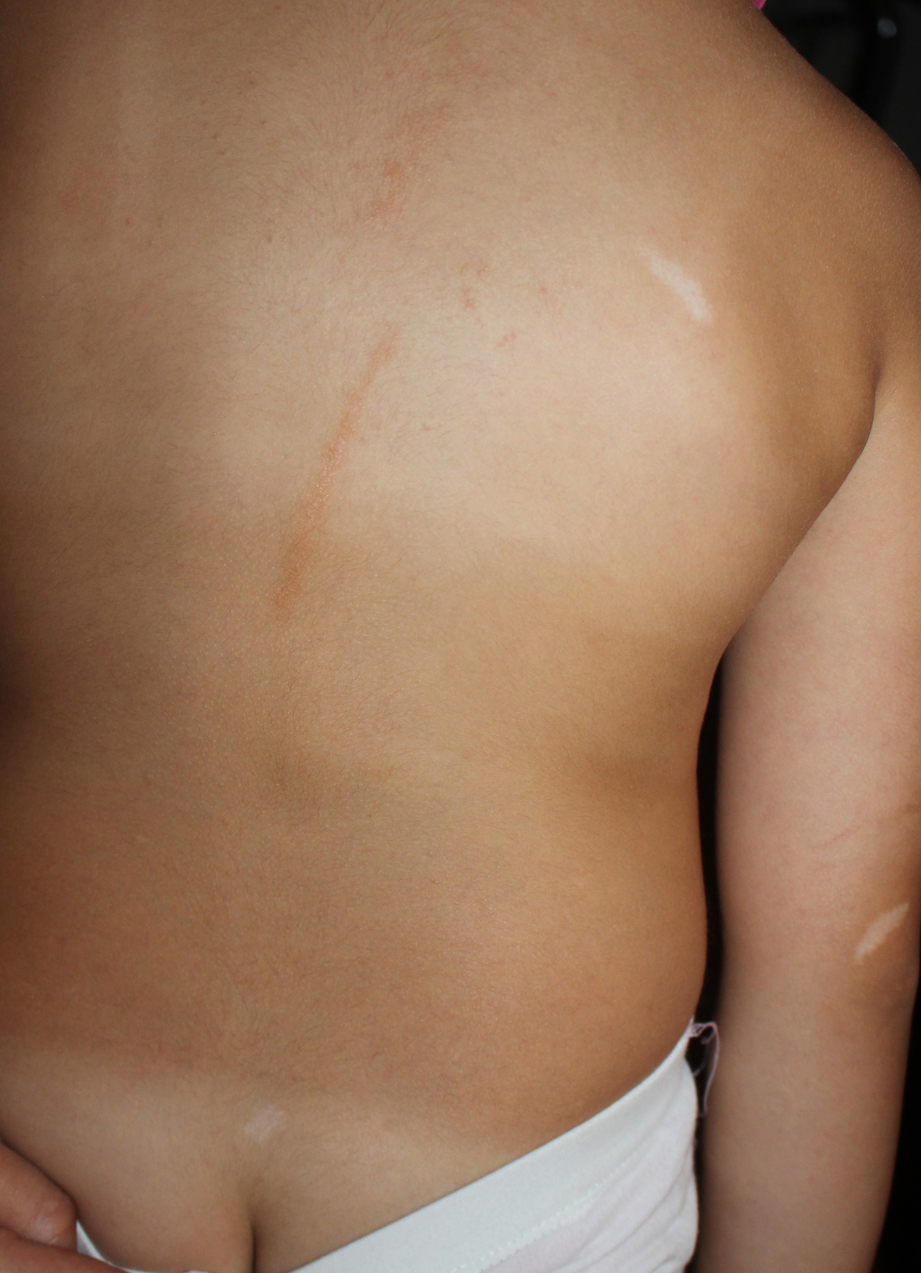Bilateral lichen striatus in a child with possible tuberous sclerosis complex.

Downloads
DOI:
https://doi.org/10.26326/2281-9649.29.4.2056How to Cite
Abstract
The diagnostic criteria for tuberous sclerosis complex were not satisfied and there was no evidence of alterations of other organs besides the skin. We have not found in the literature any case of association between lichen striatus and tuberous sclerosis complex, so we believe that the association is probably fortuitous.
Lichen striatus is an exclusively cutaneous, self-healing, asymptomatic, inflammatory disease that affects the first years of life and is distributed in a linear fashion, usually along the Blaschko lines, suggesting that on the affected line there is a clone of mutated cells following a post-zygotic mutation: this mutation would give the cells involved a particular susceptibility to an exogenous agent that on its arrival would cause the transient inflammatory reaction (3). There are various hypotheses on the pathogenetic mechanisms that lead to the inflammatory reaction and its spontaneous regression. There are many hereditary, nevus and acquired clinical disorders which, due to their distribution, are reminiscent of lichen striatus and that must therefore be differentiated from it. There are few cases in the literature of asymmetric bilateral lichen striatus (1, 2, 4-9). The actual case is singular for the involvement of two contralateral cutaneous segments of skin. It should also be noted that the hypomelanotic residua occurred only on one of the two segments of the back.
